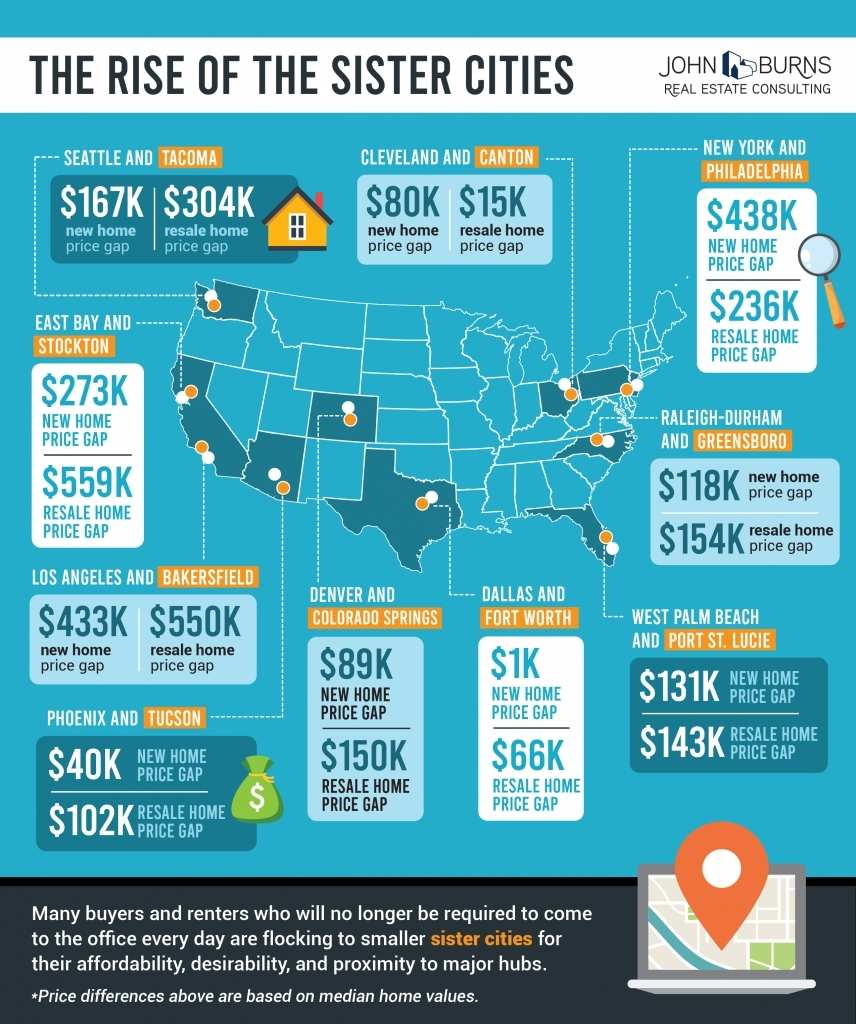Just like little sisters steal their big sister’s clothes, sister cities across the country are stealing home buyers from their larger and nearby major metros. Many buyers and renters who will no longer be required to come to the office every day are flocking to these smaller metros for their affordability, desirability, and proximity to major hubs. What factors make sister cities appealing?

Sister cities offer:
- Huge savings. Sister cities sit within a two-hour drive of their larger counterpart metros and provide significant savings for both resale and new home buyers. Consider Seattle and Tacoma with 1 hour and 15 minutes drivetime between them. Buyers save roughly $304K on a resale and $167K on a new home in Tacoma, when comparing the median home values.
- Homeownership for individuals who might otherwise rent. The lack of home supply or strained affordability in core markets have pushed many would-be buyers to rentals near their office. In contrast, homeownership remains more attainable in the sister cities because of their lower-priced homes.
- Lower rents. It isn’t just the appeal of homeownership. Lower rents appeal to those who want to save money or spend their earnings elsewhere. Sister cities provide that opportunity.
- Proximity supports the remote or hybrid work model. Many top employers are embracing permanent work-from-home and hybrid models for some of their team members. Remote work opportunities allow buyers to choose markets and housing that best match their desired lifestyle. Many will commute only occasionally, and we foresee large employers setting up satellite offices for their distant employees.
- More for your money. Lower land costs in sister cities support larger lot sizes and home sizes for highly desirable private indoor and outdoor space that is difficult to find in expensive markets.
- Most have remnants of a small town feel. Some home buyers prefer this quaintness regardless of life stage, but still appreciate access to big city entertainment, shopping, airports, and health care. Port St. Lucie and Colorado Springs provide great escapes from the density and traffic in their expensive counterpart markets, West Palm Beach and Denver.
- A few even offer a lower tax burden. Take New York and Philadelphia for example: not only does the median new home in the Philadelphia suburbs only cost $431K compared to $869K in New York, but the 3% reduction in state income tax does not hurt either.
As a result of these benefits, sister cities are seeing a lot of regional migration from residents who are leaving big sister complements. We expect this trend to continue as work-from-home permissions become clearer for many. We are not, however, forecasting a housing bust in the “big sister” cities, as these areas are more expensive for a reason – a great quality of life for those who prefer a higher density lifestyle. Unlike borrowed clothes in the little sister’s closet, the growing populations of the sister cities are more likely permanent.
by Devyn Bachman & Nicole Luszczak John BurnsReal Estate Consulting




